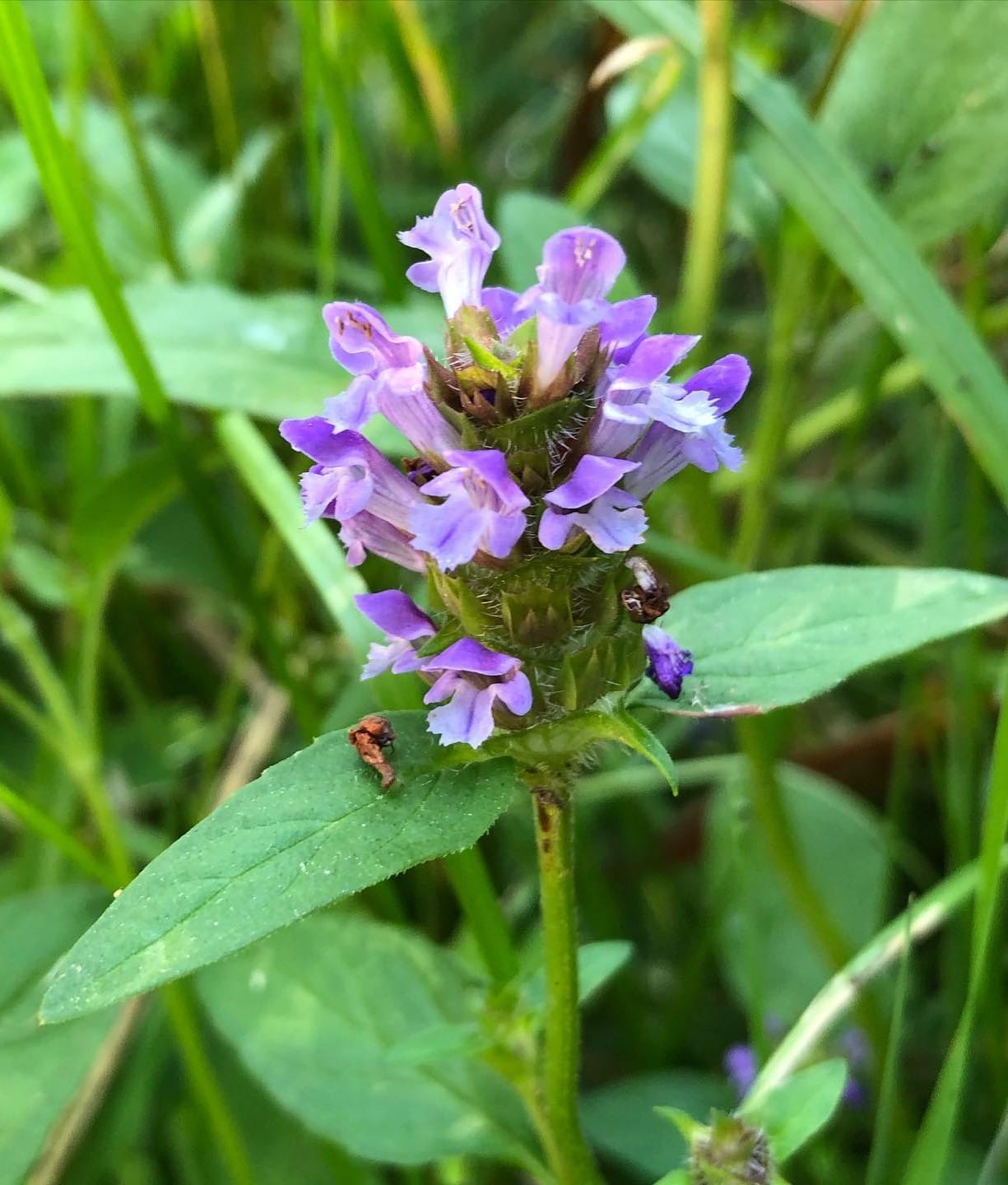Though the alternate arrangement of Heal All ovate leaves might seem intriguing, wait till June to get enchanted with an even more exciting flower.
Go through the article to learn more about the Heal All flower and how you can get the most out of it.
Table of Contents Show
Is Heal All Annual Or Perennial?
Famous as Selfheal or Woundwort, Heal All is a creeping perennial herb belonging to the mint family, Menthaceae.
The perennial nature is because Heal All (Prunella vulgaris) plant regrows from the same root even after being mowed due to its low growth and spreading behavior.
The stem has lance-shaped, perpendicular turfed leaves which grow near moist fields, damp pastures, and woodlands.
Moreover, the stem has nodes that root in optimum growing conditions, mainly damp soil with bright sun. Thus, Heal All becomes weedy.
Meanwhile, the evergreen leaves stay year around and act as a ground cover that works best for soil erosion control.
What Does A Heal All (Selfheal) Flower Look Like?
The Heal All plant prefers shady places over brightly lit areas to attain a mature size of 12 inches while creeping out its square reddish stems.
Here, stems give rise to serrated leaves, which grow oppositely with new growth.
And blooming appears once the leaf reaches its mature size of 4 inches long. It is mainly from late spring to early fall.

However, the color of Heal All flower can range from purple to pink, red, and white. It usually appears at the stem end and has an erect spike inflorescence.
The spikes measure 1 to 2 inches long. You can easily identify it from the petal progressing from the lower end to the upper end of the spike.
What Are The Benefits Of Heal All Flower? [Medicinal Uses]
The creeping and wildflower nature of Heal All might confuse you to think of it as a poisonous plant.
However, the Selfheal plant is a highly nutritious and edible herb native to Eurasia and North America.
Also, a compress prepared from a mixture of bruised leaves and vinegar helped reduce headaches when kept on the forehead.
Even folklore has that Heal All flower holds anti-inflammatory properties that can treat various ailments, including respiratory problems.
People even consume the leaves of Heal All as an ingredient for salad, stew, and soup or even chew it raw. But it might contain a bitter taste.
Thus, wash it to remove the contaminants from the leaves before consuming. Also, it has astringent properties, which you can use to clean wounds.
Moreover, people boil its leaves and use the same water for bathing to relieve muscle pain.
However, research is still on to find any further scientific claims on the medicinal use of Heal All plant.
From Editorial Team
Cautions To Take!
Better to consult a healthcare provider before consuming any part of Heal All as you might be allergic to the rosemarinic and ursolic acid present in it.
Moreover, breastfeeding and pregnant women should keep their distance from this plant as its effect is still unclear.


